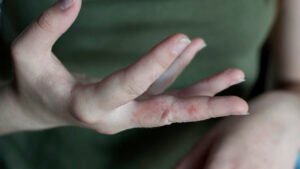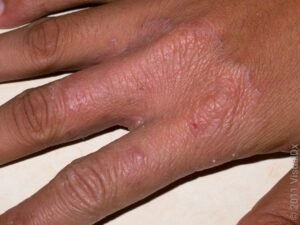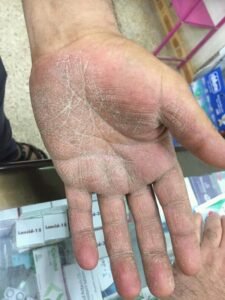Introduction
Hand fungus, known as Tinea manuum, presents as a red, scaly rash with a ring-like shape. It can spread through contact with contaminated objects or infected individuals. Hand eczema, or dermatitis, is a chronic skin condition that causes red, itchy rashes. Although they may appear similar, distinguishing between the two is crucial for proper treatment.

Hand Eczema vs. Hand Fungus
While both conditions cause red, itchy rashes, hand fungus typically has a raised, ring-like border, often affecting one hand. In contrast, hand eczema usually appears symmetrically on both hands without a raised border. Hand eczema can be managed but often recurs, whereas hand fungus can be cured with antifungal treatment.

Risk Factors
- Hand Fungus: Sports involving skin contact, using public showers, sharing personal items, handling animals, wearing tight gloves, or excessive sweating.
- Hand Eczema: Occupational exposure, contact allergens, irritants, and genetic predisposition.

Symptoms
- Hand Fungus: Itchy, red rash with raised borders, peeling skin, and possible nail involvement (onychomycosis).
- Hand Eczema: Severe itching, dry and sensitive skin, red or brown patches, oozing, and thickened lesions.

Treatment

- Hand Fungus: Over-the-counter antifungal creams (e.g., miconazole or clotrimazole) for mild cases; stronger topical or oral antifungals for severe cases.
- Hand Eczema: Moisturize regularly, avoid triggers, use mild soaps, and apply steroid creams for inflammation. Antihistamines can help reduce itching.
Summary

Differentiating between hand fungus and eczema is essential for effective treatment. Hand fungus usually affects one hand, has a raised border, and can involve the nails. In contrast, hand eczema typically affects both hands symmetrically and may lead to secondary infections due to repeated scratching. Proper diagnosis and treatment can manage these conditions and improve the quality of life.



